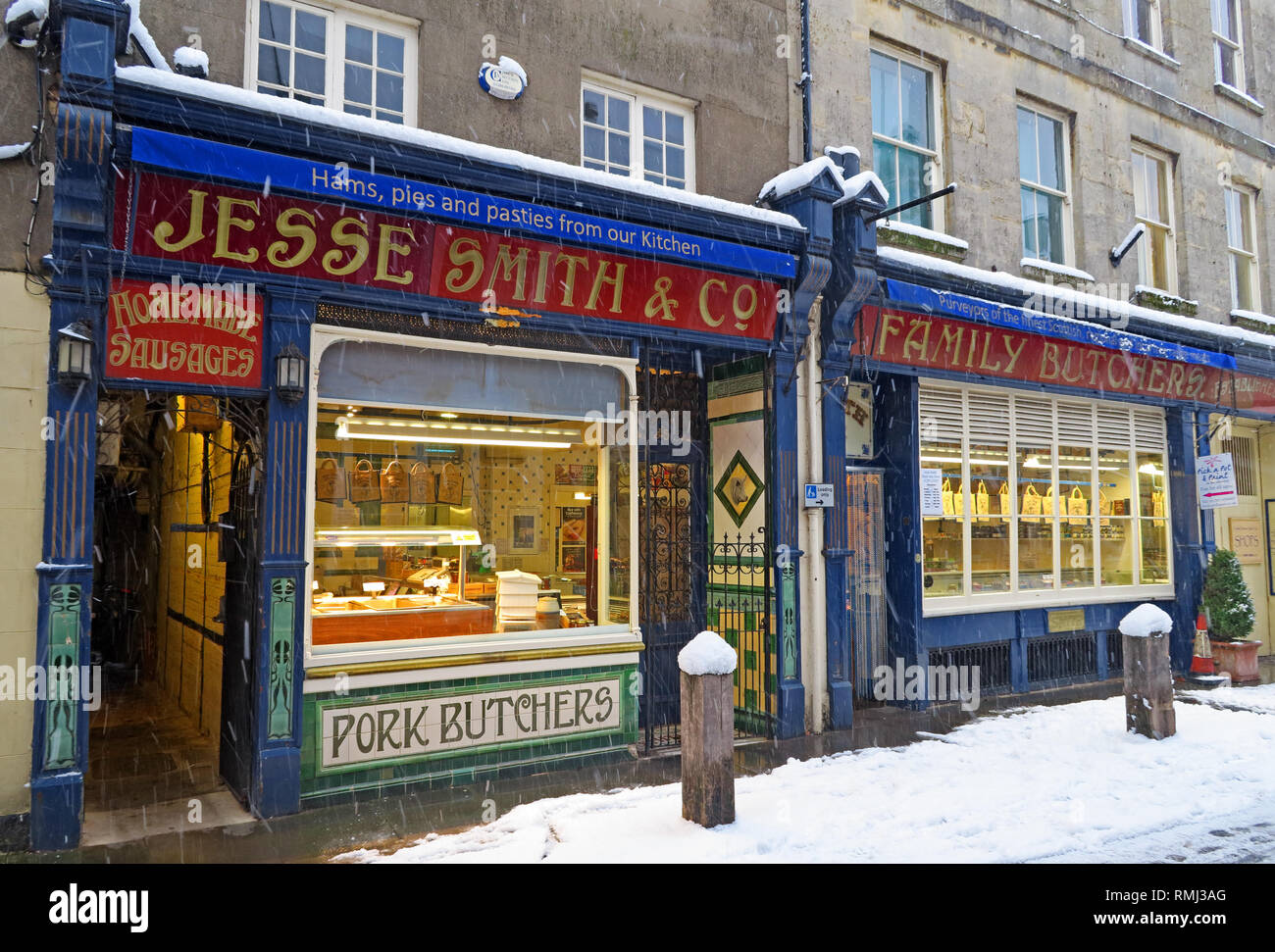Winter snow Cirencester town centre, Jesse Smith Pork Butchers, 14 Black Jack Street, Gloucestershire, South West England, UK

Image details
Contributor:
Tony Smith / Alamy Stock PhotoImage ID:
RMJ3AGFile size:
49.7 MB (2.6 MB Compressed download)Releases:
Model - no | Property - noDo I need a release?Dimensions:
5064 x 3432 px | 42.9 x 29.1 cm | 16.9 x 11.4 inches | 300dpiDate taken:
1 February 2019Location:
14 Black Jack St, Cirencester GL7 2AAMore information:
Cirencester, occasionally /ˈsɪstər/ (About this soundlisten); see below for more variations) is a market town in east Gloucestershire, England, 80 miles (130 km) west northwest of London. Cirencester lies on the River Churn, a tributary of the River Thames, and is the largest town in the Cotswold District. It is the home of the Royal Agricultural University, the oldest agricultural college in the English-speaking world, founded in 1840. The town's Corinium Museum is well known for its extensive Roman collection. The Roman name for the town was Corinium, which is thought to have been associated with the ancient British tribe of the Dobunni, having the same root word as the River Churn. The earliest known reference to the town was by Ptolemy in AD 150. The Church of St. John Baptist, Cirencester is renowned for its Perpendicular Gothic porch, fan vaults and merchants' tombs. The town also has a Roman Catholic Church of St Peter's; the foundation stone was laid on 20 June 1895. Coxwell Street to the north of Market Square is home to the Baptist Church that was founded in 1651 – making it one of the oldest Baptist churches in England. Its current building was started in 1856. To the west of the town is Cirencester House, the seat of Earl Bathurst and the site of one of the finest landscape gardens in England, laid out by the first Earl Bathurst after 1714. Abbey House, Cirencester was a country house built on the site of the former Cirencester Abbey following its dissolution and demolition at the English Reformation in the 1530s. The site was granted in 1564 to Richard Master, physician to Queen Elizabeth I. The house was rebuilt and altered at several dates by the Master family, who still own the agricultural estate. By 1897 the house was let, and it remained in the occupation of tenants until shortly after the Second World War. It was finally demolished in 1964. On Cotswold Avenue is the site of a Roman amphitheatre.